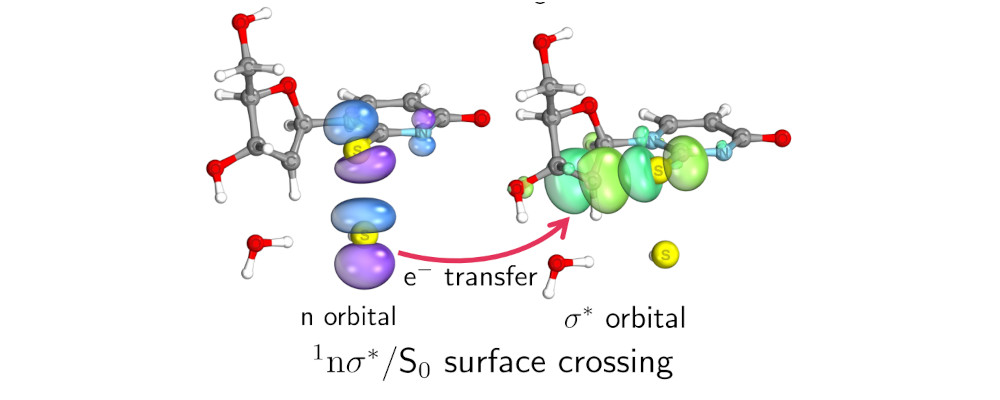Chalcogen bonding interactions have attracted significant attention in a broad chemistry community, with a particular focus on their ability to stabilise the key transition states in various organic synthetic routes. In this work, we demonstrate that they can also be harnessed in selective photoredox reactions, which cannot be otherwise achieved with alternative approaches to photoreduction. We demonstrate this concept through the photoreduction of the sulfur-containing DNA nucleoside precursor thioanhydrouridine to 2′-deoxy-thiouridine, revealing the previously unrecognized role of bisulfide in this process. Based on quantum chemical simulations, we identify a stable chalcogen-bonding complex of the hydrosulfide anion and thionhydrouridine (HS-…S contacts), which enables directional photoinduced electron transfer, resulting in the formation of non-canonical DNA nucleoside. We also disprove the possibility that photoreduction of thioanhydronucleosides could be initiated by hydrated electrons generated from irradiated bisulfide anions which do not interact with the chromophore. Finally, we show that selective photoreduction mediated by chalcogen bonds can only occur for chromophores, which exhibit sufficiently long excited-state lifetimes in the locally-excited states to undergo transition to the productive charge transfer state. These findings can be further used in the design of similar photoredox reactions which can employ the potential of chalcogen bonding interactions.
Mikołaj Jan Janicki and Rafał Szabla, Angewandte Chemie 2024
https://doi.org/10.1002/anie.202413498

